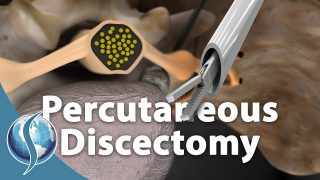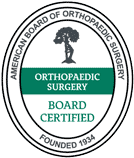Compulsory Medical Examination
Since I started my practice in 1993, I have also been performing examinations that are now known as Compulsory Medical Evaluations. To those who do not know, it is an examination arranged to evaluate a person with claims of injury from an accident. The causes are usually related to a work injury, a motor vehicle crash, or a fall.
For the person with injury claims, they have often seen several physicians and have received treatments related to the injury. As the patient advocate, these treating physicians will offer every possible treatment. The cost of such treatments are rarely discussed with the injured person, as both the patient and physician assumes that the costs will be passed to the entity that caused injury. Usually, the person with the injury obtains legal counsel to recover costs associated with care, and compensation for the pain. The injured becomes a plaintiff in a lawsuit against the entity that caused the injury.
The entity blamed for the injury typically disputes the nature of the injury, the costs of treatment, and the permanent nature of the injury. The entity obtains legal counsel, or if insured, contacts the Insurance Company to obtain representation. The entity, and sometimes, the insurance company will become defendants in the lawsuit by the Plaintiff. It sometimes gets more complicated as the defendant may also hire legal counsel to make sure the Insurance Company is following the coverage of the insurance contract. In the process of defining the injury claims, the legal counsel representing the Insurance Company and the Defendant will arrange a medical evaluation to determine the nature of the injury, the cause of the complaints, the needs for treatment, and any anticipated costs.
As the injured person does not chose the physician who will be performing the evaluation, a set of rules have been set up by the various jurisdictions on how, and when these examinations will be performed. In Florida, these examinations are called Compulsory Medical Examinations (CME).
Unfortunately, these examinations are portrayed in an adversarial light. This can be quite uncomfortable for the Examinee (the injured) and the Examiner (physician). To add to the environment of conflict, some examinations are being conducted with a Videographer documenting every part of the examination. Sometimes, there is also a court reporter transcribing every word of the encounter, as well as documenting the timing of the progression of the evaluation. The examination room can get quite crowded at times. I for one, have sympathy for the Examinee. The poor Examinee is often in a hospital gown, being videotaped while I conduct the evaluation. And, having reviewed CME evaluations by some of my colleagues, I can understand how they can be very adversarial. But I am of the opinion it does not have to be that way.
While I am used to the situation, it can be stressful for some Examiners. Having a court reporter or videographer present does not change my history or physical exam, but, I am aware of the potential for some subtle inconsistency in my report. When I dictate and organize my report, I am not provided a copy of either the video tape, or the transcription. By the rules, I am not able to record or video the exam. For some of the more complicated situations, reviewing those tapes may have been helpful in reconstructing the history provided by the examinee. Not always, but there are some attorneys who use those tapes or transcripts to find an “ah-ha” moment, where my recollection of the information may not be 100% consistent with the history or the physical exam. These subtle inconsistencies have not changed my opinions, but the job of the opposing ttorney is to question my objectivity, and I understand why some would exploit these subtle differences. I understand why some attorneys feel the video is there to protect their client. But, if the Examiner remains objective and professional, the video does not have any bearing on the validity of the examination.
For the Examinee, in addition to the inconvenience of being examined by a physician not of their choosing, and the embarrassment of being videotaped while being examined, there is the psychologic stress of feeling the Examiner does not believe their complaints. For me, my goal as a CME Examiner, is to stay neutral and objective. But, in most situations the examinee has been counseled to expect an adversarial attitude. I do thank the attorneys that advise their clients to be truthful, and cordial. It helps the process, and sometimes, an accurate and complete history can be helpful for the injured.
My protocol is to explain to the Examinee the nature of the visit. I explain my role is to ask about the causes of the complaints, and the relationship of the complaint to a specific event. I ask about the medical treatments, and ask about any future plans. I ask about any similar complaints in the past, or any new unrelated injuries.
I then perform a physical exam of the areas of interest. I usually explain that the Examinee can avoid any part of the physical exam for any reason. As an orthopaedic and spine surgeon, my examination is limited to the musculoskeletal and spinal neurologic findings.
Up to this point, the examination is similar to exams I perform on my own patients. But as the CME Examiner, I cannot establish a Physician-Patient relationship. I cannot offer guidance or directly communicate my opinion. Though my objectivity is often challenged, I am to offer an objective report, based on the history, physical exam, available diagnostic records, and the available medical records. While the face to face time with the examinee may not be very long, the great bulk of my time is spent reviewing records regarding the injury claim. Often times, it requires reviewing tests, accident reports, medical records, employment records, deposition statements, surveillance videos, and recently, social media postings. Then, there is a challenge of writing my opinions, and presenting it in a manner that is understandable. The reports can be as long as 30 pages, and can take a cumulative time of over 8 hours to finish. While the reports are an expense to the group that retained me for the report, the fees are in consideration of my time. That time could have been spent seeing consultations, rounding on patients, or performing surgery.
I weigh all the information, while formulating my opinion. But, in the end, I know this information will be used by the respective parties to try to come to an understanding. If an understanding is not reached, I will then be asked to discuss my opinions in a format by which a jury can then decide the objectiveness and validity of my conclusions.
By design, there is a defense orientation of the Compulsory Medical Evaluation (CME). The plaintiff has their physicians rendering opinions supporting the injury. As the CME examiner, at times, I have found that the plaintiff had legitimate and permanent injuries caused by the accident/fall, etc. While I am performing the CME usually for the defense, I am still also asked to maintain my objectivity. Some Defense counselors have been surprised by my opinions supporting the permanent injury claim. But, most defense counselors accept my opinions, and work to resolve the dispute between the two parties. I guess if the attorney spent resources to obtain a CME, the attorney is hopeful the opinion would be favorable for their position. But, as the objective CME examiner, that is not always the case.
Interestingly, CME’s are not often utilized by the Plaintiff Attorneys. Strategically, an objective opinion by someone who has reviewed all the available documents would likely be helpful for the injured. But, usually, the plaintiff legal counsel will state that the treating physicians can provide the best evidence of the injury, and the nature of its effect on the injured. I have seen the treating physician, who by definition is the patient’s Advocate, being considered a “Hybrid Expert Witness”. The issue of objectivity is a legitimate concern when utilizing the opinion of the Treating Physician.
As the treating physician, you have established a relationship with the Patient. You are the patient’s advocate. You will do what is in the best interest of the patient. But, that cannot make you objective. It is like asking a mother to write a letter of recommendation for her child. A bit of hyperbole, but everyone will understand the analogy.
Also, most physicians are focused on the complaint of the patient, and not necessary the cause of the complaint. Often times, as the CME examiner, I would agree that treatment is appropriate for the complaint. But, I would not agree that the cause of the complaint is related to the date of injury. Often times, the treating physician is not provided all the background information, or prior records that might show similar complaints in the past. Also, human memory is not perfect, and many times, the recollection of the injured may not match the prior medical records. As the treating physician, often times, you are not provided all the available records before you make your opinions. While your recommendations for treatment may be appropriate, without the prior records, the opinions about the cause of the complaints may not be based on all the known information.
As stated above, often times, costs are not discussed as there is an automatic assumption the Defendant will be paying for the expenses. But what if it is found that the injury was not caused by the accident? As there was no discussion about the costs, and as there has been no payments made directly from the Patient to the Physician, it can lead to a very awkward situation. The Patient themselves, may dispute the necessity, and the costs of all the prior treatments. Patient and Physician may become adversarial when trying to determine appropriate fees. To avoid that situation, both the Patient and the Physicians would naturally assume the injury is the fault of the defendant, and therefore the costs will be the responsibility of the defendent. The treating physician’s opinion can influence whether the defense will compensate for the rendered care. Rationalization behavior can cause loss of objectivity.
While some will say the monetary incentives also make objectivity difficult for the CME physician, understand the CME physician is being compensated for their time, and the pool of funds available for compensation is not dependent on the outcome of the litigation. Physicians who perform CME evaluations can make substantial incomes. Every attorney will try to enter the financial information into evidence. But, over time, only objective CME examiners who can pass the constant scrutiny and attacks on their objectivity can continue to provide such evaluations. Rules of Discovery allow opposing counsel to obtain information on the financial arrangements of the CME, and also to discover the prior financial history in relationship with the Examiner and the attorney, or insurance company. But, while the CME examiner can offer opinions, in the end, it is the negotiation between the parties that decide the worth of the claim, or the opinion of the Jury that decides the legitimacy of an injury. The Jury also ultimately decides the objectivity of the CME opinion. And, while the Jury may factor in the financial incentives for both the CME Examiner and the Treating Physician, the decision should be about the facts of the situation. Or as some would put it “it is about the pursuit of the Truth”.
Given the above analysis, I am of the opinion that the Plaintiff counsel should consider arranging a CME type examination for their injured client. I understand that financially, the use of the “hybrid witness” may make more sense. The “hybrid witness'” often does not seek compensation until the conclusion of the dispute. For simpler situations, that do not include a surgical option, the expense of a CME may not make monetary sense. But, in a very costly situation, is a “hybrid witness” with a bias in favor of the injured, the best option?
Many CME examiners have a more conservative orientation towards surgical treatment of injuries. That is why their opinions are valued by the defense. But when the situation is clearly related, permanent, or requires surgery, the CME evaluation can provide the objective analysis necessary to achieve an end to the litigation. If the plaintiff counsel trusts the objective nature of the CME examiner, and truly believes their clients injuries are related to the event, the cost of a CME opinion will be offset by the value for the injured.
Last modified: March 15, 2019










